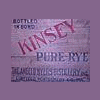What is your Favorite American Beer Now and what did you like many years ago?
This topic has been inactive for at least 365 days, and is now closed. Please feel free to start a new thread on the subject!

By
dave ziegler
in General Non-Whiskey Alcohol
By using this site, you agree to our Terms of Use.
Recommended Posts